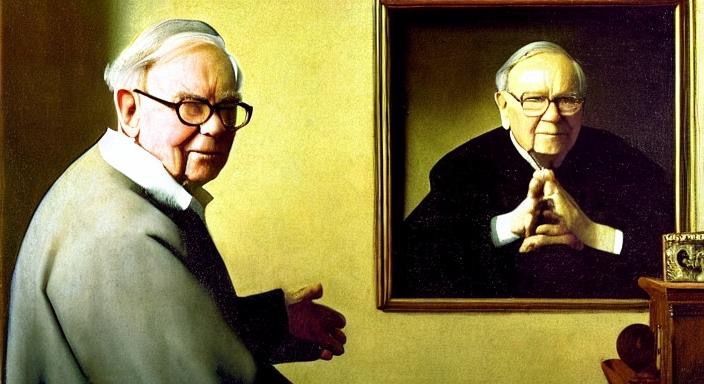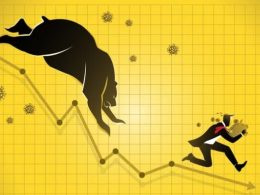by Cole Smead, CFA, CEO, Smead Capital Management
Dear fellow investors,
Investors have talked a lot about the Buffett indicator since the Oracle of Omaha began commenting on it. Buffett compared the market cap of the US stock market to GDP. Assumably, he uses it as a long-term indicator of the attractiveness of overall stock prices. While we have other favorite measures, like the St. Louis Fed data on equities as a percentage of US household financial assets, there are plenty of disturbing aspects to Buffett’s data. The Buffett indicator sits at roughly 217% today, the highest ever.
We came across another interesting way of looking back at the economic history of past capex cycles to attempt to understand the current big phenomenon driving stock market enthusiasm with the current AI buildout. Beginning with congressional approval and Lincoln’s signature during the Civil War, railroads were funded and floated with government subsidies to run toward the ‘Manifest Destiny’ of American history. The golden spike was put in Promontory, Utah in 1869, but the capital kept coming over the following two decades. This capital was consumed to build out the rail network.
To further understand the economic tailwinds that could be caused by the AI buildout, we will go to the chart below from Paul Kedrosky, looking at the economic contribution of today’s AI capex versus the 1880s railroad capex to the economy.
What was unique about the railroads was how important they were to the economic activities of the late 19th century. The land and loans provided by the federal government and the capital provided in equity and loans by investors to the railroad companies were very large. This forced growth, but as returns were hard to find, many of these railroads failed or were driven into restructuring. The economic panics of 1873 and 1893, as well as the recession of 1882-1885, reminded investors that railroads were not good investments.
Back to Buffett, as he has commented a lot on the railroads over the years. First, he has watched and read numerous annual reports of Union Pacific, which is headquartered to this day in Omaha, Nebraska. Second, he thinks the best businesses are the ones that need little or no capital retained in the business. This would cause him a natural disdain for this industry over his investing career. It’s a tough business beyond the capital needed. As he said in the 2011 Berkshire Meeting, “Now normally, we are not enthused about businesses that require heavy capital investment, just like utilities and the railroad.” It’s cyclical and has to deal with the woes of the economy, as business and consumer needs dominate the product.
Many people talk about the concentration of the stock market today. The concentration of the new AI revolution is driving this excitement. When you look at the AI hyperscalers (MSFT, GOOG, META, AMZN and NVDA), they currently sit at 25% of the stock market. During the decade of the 1880s, railroads were roughly 60% of the stock market.
What this leads us to is, if the stock market is 217% of the economy (GDP), the AI story’s value is 50% of the economy. When the railroads were big in the 1880s, the stock market was 50% of the economy (GDP) in value, which meant that the railroad stocks were 30% of the economy.
There is a measure that we can draw out of this to help simplify how we should think today. It is what I will call the “investment excitement ratio.” You get this ratio by taking the concentration of an industry or a group of companies in the stock market. You then multiply it by the Buffett indicator (US stock market value to GDP). Then divide that by the capex to GDP ratio. It’s a way to interpret how current capital spending in the economy is being valued in the stock market. The higher the ratio, the higher the excitement. The lower the ratio, the less exciting.
This means that the railroads had an investment excitement ratio of five times in the 1880s, roughly speaking. As has been pointed out by Buffett, Munger and others over the years, railroads were bad investments for decades. Large required capital expenditures didn’t cause them to succeed. It was a problem, not a feature.
The investment excitement ratio stands at 20 times for the AI story in the US stock market today. Four times larger than the excitement in the 1880s for railroads. You might be able to figure out that quite a few investors outside the US may be excited about this currently, too.
This is important for investors, as becoming more capital-intensive is never a good thing. Buffett was asked at this year’s meeting about the AI capex spend. His reply was:
“Well, it’s always better to make a lot of money without putting up anything than it is to make a lot of money by putting up a lot of money…A business that takes no capital to speak of – Coca-Cola, the finished product which has gone through bottling companies takes a lot of capital, but in terms of selling the syrup or concentrate, that doesn’t take a lot of capital…We’ve got businesses that take very little capital that make really high returns on capital…Property casualty insurance is kind of a rare business because you need capital as a guarantee fund that you will keep your promises, but you can use it to buy other low capital-intensive businesses…It’ll be interesting to see how much capital intensity there is now with the Magnificent 7 compared to a few years ago. Basically, Apple has not really needed any capital over the years and it’s repurchased shares with a dramatic reduction. Whether that world is the same in the future or not is something yet to be seen.”
Buffett made his best investments when he only raked the market for stocks that needed little or no capital. Eventually, they ran out of sizable, well-priced investments that fit this and had to begin to look for businesses that were asset-intensive, but sizable and well-priced. This began with MidAmerican Energy and became a broader theme with the purchase of BNSF. The most capital-light investment of the last 15 years was his purchase of Apple. Below is how returns changed from the asset-light, to the asset-intensive, to the asset-intensive with Apple eras.

Source: Bloomberg, CNBC.
The problem that Berkshire ran into is the same issue that these big-cap tech hyperscalers are dealing with. They have exhausted their asset-light investment opportunities in arenas like media, advertising, hosting, retailing and software. They are now forced to go seek new investment opportunities in a capital-intensive investment called AI to seek their returns, just like Berkshire did with MidAmerican and BNSF. The railroads were poor investments for a long time. Charlie in the 2007 Wesco meeting said, “Railroads have long been a terrible business and have been lousy for investors. We did finally change our minds and invested. We threw out our paradigms…” Buffett and Munger did this to find investment opportunities that fit what they do. It is not different for these tech businesses. The difference is that Buffett and Munger didn’t pay for the railroads when they had the largest financial excitement flowing through, like the 1880s. The investment excitement ratio is massive in this AI capex binge. If businesses that require large capital expenditures didn’t help the greatest investor of all time, why would they help any other investor or the stock market? If it doesn’t help the stock market, we believe returns will go lower compared to the past. This is the Berkshire problem.
Play The Long Game,

Cole Smead, CFA
The information contained in this missive represents Smead Capital Management’s opinions, and should not be construed as personalized or individualized investment advice and are subject to change. Past performance is no guarantee of future results. Cole Smead, CFA, CEO and Portfolio Manager, wrote this article. It should not be assumed that investing in any securities mentioned above will or will not be profitable. Portfolio composition is subject to change at any time and references to specific securities, industries and sectors in this letter are not recommendations to purchase or sell any particular security. Current and future portfolio holdings are subject to risk. In preparing this document, SCM has relied upon and assumed, without independent verification, the accuracy and completeness of all information available from public sources. A list of all recommendations made by Smead Capital Management within the past twelve-month period is available upon request.
©2025 Smead Capital Management, Inc. All rights reserved.
This Missive and others are available at www.smeadcap.com.















